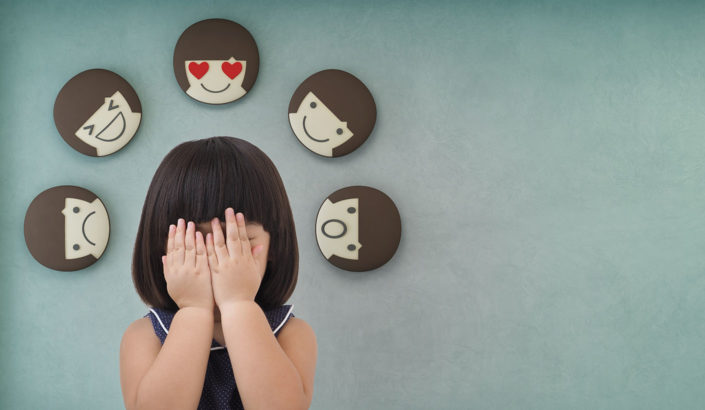What Are Emotions?
Emotions are a response to an event—either internal (a memory or thought) or external (a conversation, a conflict with another person, or an upcoming task)—that integrates physiological, cognitive, behavioral, and expressive processes and that may shape our reaction to that event.
A student who is about to take a test may feel her heart beat faster and her stomach clench (physiological). She may worry about failing the test (cognitive) and, to get out of the test, might consider telling her teacher that she feels sick (behavioral). The teacher notices that the student’s facial expression appears tense or anxious and that she is biting her nails (expressive).
Researchers have identified at least six universal emotions: happiness, sadness, anger, surprise, fear, and disgust, with many variations of each; however, recent research suggests that there are at least 27 distinct emotions that are intimately connected with each other.
On the last day of college, a graduating student feels nostalgic, sad, terrified, elated, and relieved—all at the same time.
We express our emotions through our facial expressions, voice, and touch.
A student grabs her seatmate’s arm in fear when she receives her final exam results.
Emotions last from several seconds to several hours, or longer, depending on things such as the importance of the event or how long someone thinks about an event.
A student whose teacher just announced a pop quiz feels both surprise and fear for a brief moment.
A student whose bird died feels sad for a week.
Why Are They Important?
Emotions provide information about ourselves and they shape our relationships with others, in groups, and in society, and can be determined by cultural beliefs and norms.
Here are a few examples:
Emotions and Ourselves
- Emotions tell us whether we want to approach or avoid a situation.
Should a high school student approach a friend who is happy about passing a difficult test?
Should a preschooler avoid eating an apple that looks rotten?
- Emotions let us know whether an event is relevant to our lives.
A high school student just learned that his best friend got accepted to a college near the one he was planning to attend.
- Emotions help us decide what action to take–but they don’t require us to carry out the action.
A student failed an important test in physics that he studied hard for. He thinks about dropping the class, but instead chooses to take advantage of the professor’s office hours.
A student’s seatmate scribbled all over his drawing. He’s angry and wants to tell the teacher, but instead tries out his newly-learned conflict resolution skills on his seatmate.
Emotions and Others
- Emotions help us understand others’ emotions, beliefs, and intentions.
During a class discussion on a thorny political issue, students express a range of emotions, including anger, curiosity, indifference, joy, or confusion, revealing some of their possible beliefs about the issue.
On the playground, a teacher sees a group of students gathered around two students, one of whom is saying mean things to the other. Before interfering, he notices that one student in the group looks angry, making him wonder if she will stand up to the student who is being unkind.
- Emotions can motivate or prevent others’ behavior.
A teacher gives a stern look to two students who are talking during class, making them stop their conversation.
With the basketball team losing at half-time, the basketball coach gives the players an inspiring pep-talk to motivate them to win.
Emotions and Groups
- Emotions help define group boundaries.
In history class, students learn how the Nazis used fear and hatred to ostracize and persecute Jewish people.
- Emotions motivate us to avoid certain behaviors.
In order to avoid the pain of social ostracism, a middle school student squashes her goofy sense of humor and instead acts with aloofness–just like the “popular” kids.
Emotions and Society
- Emotions help children learn the norms and values of their culture.
A student is praised by her teacher for showing assertiveness when working with her student group. The pride felt by the student helps to inculcate this Western societal value into the student’s worldview.
- Emotions help shape cultural identity.
Students examine formal portraits of country leaders and discuss what the facial expression of each leader might say about their country’s cultural norms. For example, the wide smile of President Obama vs. the slight smile of Japan’s Prime Minister Shinzo Abe.
- Emotions can perpetuate cultural ideologies and power structures.
Students discuss the effects of societal gender stereotypes and beliefs around emotions. For example, women are too emotional, but not allowed to show anger, or the only emotion men are allowed to show is anger.
Practices

Are you ready to build a kinder, happier school where everyone belongs? Join Greater Good Educators! Explore the science of well-being in a supportive community of educators from around the world. Registration is now open for the 2025-2026 school year!


